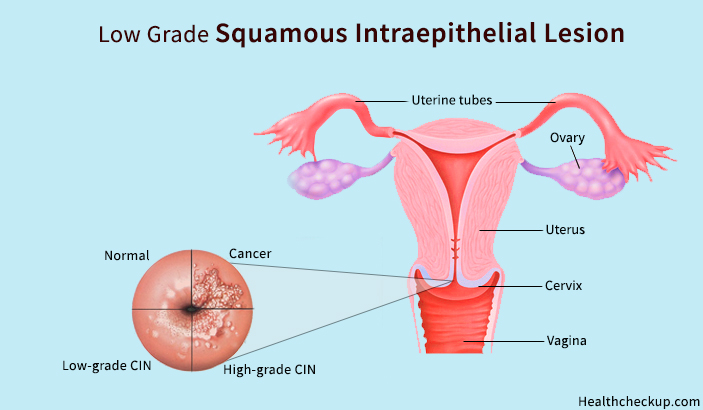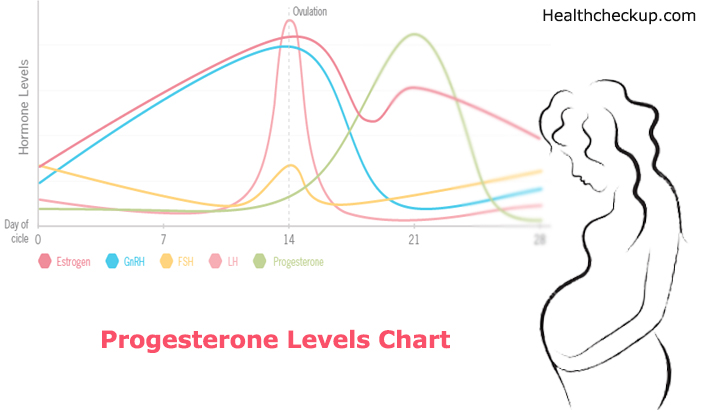The human body has its own pre defined mechanism to indicate and provide warning signals for a problem at sight. At the same time, the human body also has a defence mechanism at the place to manage such problems. But at times, human beings do not take the clues given by our body and neglect it thus endangering our lives sometimes.
That is the reason why it is advisable to regularly check and undergo routine tests and screenings in order to confirm our vital health parameters from time to time. Such routine checkups can also help in early detection of low grade squamous intraepithelial lesion which can be a waning signal for an impending problem of Human Papilloma Virus (HPV) in women.
What Does Low Grade Squamous Intraepithelial Lesion Mean?
In the simplest terms, low grade squamous intraepithelial lesion indicates slightly abnormal cell formations on the surface of the cervix. The cervix is the lower and the narrow end of the uterus which forms the canal between the uterus and the vagina in females. Formation of abnormal cells in any part of the human body, if not controlled by the body itself, can lead to cancer. Similarly, prior to the stage of cancer within the tissues of the cervix, these cells indicate slight changes which are often termed as dysplasia. Two different types of dysplasia include
- Mild Dysplasia called Low Grade Intraepithelial Lesion (LSIL)
- Moderate or Severe Dysplasia called High Grade Intraepithelial Lesion (HSIL)
Both the LSIL and/or HSIL may or may not transform into cancer. However, it is important to understand the such situations so that corrective actions can be taken timely.
Low Grade Squamous Intraepithelial Lesion Symptoms
Low grade squamous intraepithelial lesion, is also known as Mild Dysplasia. It is generally caused by certain kinds of Human Papilloma Virus (HPV). This is one of the common abnormalities detected during a Pap Test. Though, such low grade squamous intraepithelial lesion or LSIL usually goes without any treatment, at times these abnormal cells can convert and transform into cancer which might spread to the other normal tissues in and around the areas, thus creating a big problem. Therefore, it is recommended and advised to undertake adequate diagnosis as soon as possible.
Cervical Dysplasia, in general, including high grade squamous intraepithelial lesion (HSIL) and low grade squamous intraepithelial lesion (LSIL) cannot be associated with any particular symptom. Human beings would not be in a position to estimate whether they have low grade squamous intraepithelial lesion or LSIL. The only way to detect low grade squamous intraepithelial lesion or LSIL is undergoing Regular Cervical Cancer Screening. Such screenings usually are done with the help of a Pap smear test or a Pelvic Examination by a practicing medical practitioner specialized in the area.
(Read – Lumps and Bumps on Labia Minora)
Low Grade Squamous Intraepithelial Lesion Causes
The primary cause of low grade squamous intraepithelial lesion or LSIL is infections involving certain types of Human Papilloma Virus (HPV). HPV is a common infection usually transmitted during sexual contact and therefore most of the new HPV infection cases are reported amongst the women between the ages of 15 to 25 years. Therefore, Low-grade squamous intraepithelial lesions (LSIL) are also common in reproductive age women. Thus there is a chance that even pregnant women can suffer from the same.
The risk of HPV infection increases with the increasing number of sexual partners. Other factors which can increase the risk of HPV Infection include smoking cigarettes and the presence of other diseases which suppress the immune system of the human being such as HIV infections.
Among these HPV infections, most of the HPV infections do not produce any warning symptoms and get cured and resolved by on its own almost spontaneously. However, there are certain HPV infections which do not get resolved. These can persist over a period of time for reasons unknown. These persistent HPV infections may lead to the development of genital warts, cervical dysplasia, and most dangerously cervical cancer.
(Read – Squamous Epithelial Cells in Urine)
Low Grade Squamous Intraepithelial Lesion Treatment
Low grade squamous intraepithelial lesion or LSIL usually undergoes spontaneous regression without treatment. Therefore, at this stage, most women are advised to follow up with a good medical practitioner regularly since monitoring without specific treatment is found. The most appropriate treatment in case the diagnosis is confirmed and all the probable abnormal areas have been identified.
In case the LSIL does not subside or resolve spontaneously and the regular screenings suggest more such lesions or in case the women are detected to have high grade cervical dysplasia or high-grade intraepithelial lesion (HSIL), then surgical treatment might need to be adopted according to the medical practitioners understanding and advice. Such surgical treatments can further be classified as
- Destruction or Ablation of the Abnormal Area
- Removal or Resection of the Abnormal Area
Depending on the condition of the patient’s problem, the medical practitioners would take the due corrective measures.
Even in case of pregnant women over the age of 20 years, suffering from cervical cancer, may either elect to undergo colposcopy during their pregnancy term or may safely defer the colposcopy process until 6 weeks or more postpartum, depending on their condition and advice of the medical practitioner.
Low grade squamous intraepithelial lesion is the preliminary stage. Early detection of low grade squamous intraepithelial lesion would certainly help in controlling the situation and the sufferings.
Medically Reviewed By

Samarpita is a dedicated freelance writer with avid experience in the space of health, she specializes in topics related to diet, nutrition, immune-related diseases, detection and prevention of diseases and taking a natural route to cure such diseases.








